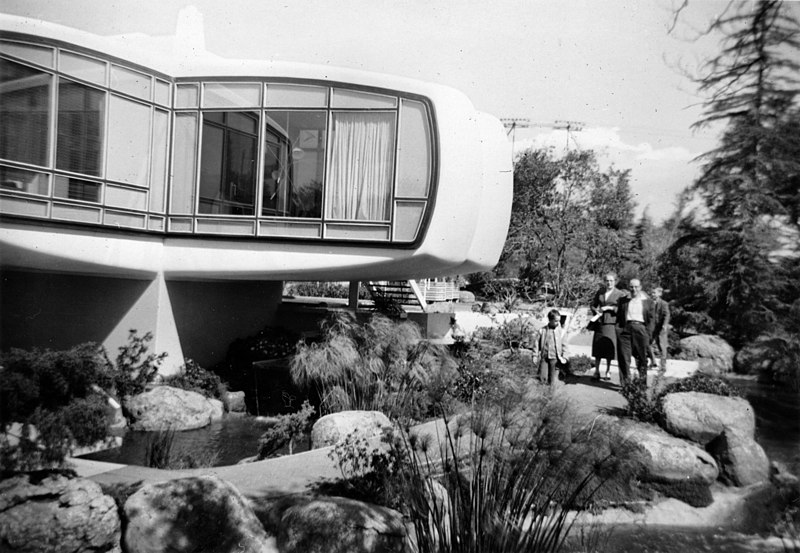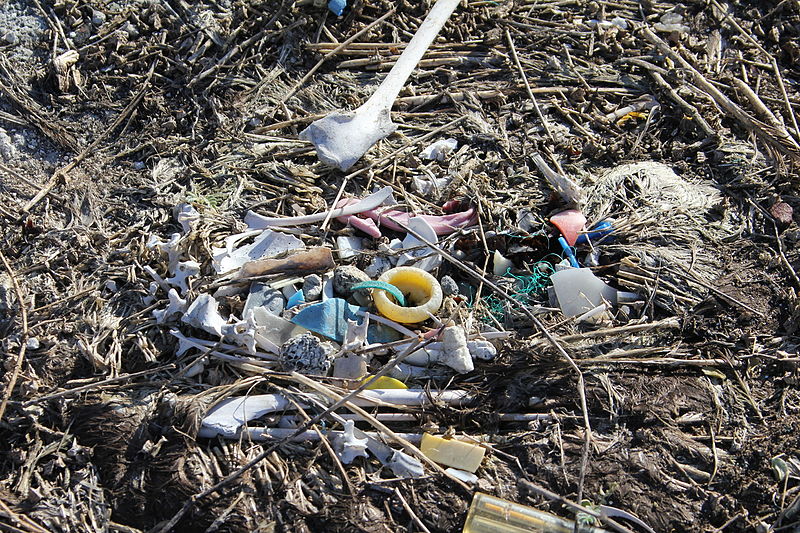
(Orange County Archives/Wikimedia)

(Orange County Archives/Wikimedia)
Monsanto’s House of the Future was an attraction at Disneyland for 10 years between 1957 and 1967. It was a look into what living in 1986 could be like. It was made almost entirely of synthetic manmade materials, namely fiberglass and plastics.
“Is everything of plastic? Almost, ” a video advertisement for the futuristic dream house boasts.
We are past that future now. So where is the house?
Well, depending on the type of plastic, pieces of the house may have ended up in different places around the world. Since plastics can take anywhere from 20 to 500 years to break down, elements of the house are likely still somewhere on this planet, negatively affecting animals and plants alike, and likely ending up on our plates.
Microplastics have been found everywhere, and are now thought to be ubiquitous in the environment.

Microfibers from House of the Future’s synthetic fabrics could be falling out of the sky with snow and rain. Microplastics have now been found to undergo transportation via the atmosphere and be deposited back down to earth.

Some of the synthetic materials, once weathered into smaller pieces by other forces could easily be ingested by all sorts of wildlife, especially since research shows that plastics immersed in ocean water emit a chemical signal that seabirds smell and easily mistake for their other sources of food.
Some of the more dense plastics from the house might more easily sink in aquatic environments, like this high-density polyethylene bucket at the bottom of the ocean.
Even if the entirety of Monsanto’s House of the Future was properly disposed of in a landfill, it could still be wreaking havoc on the environment. Landfills have been found to leach chemicals and have the potential to contaminate groundwater sources. Or, like the scene shown in this photo, the elements can weather away at the manmade features and eventually wash them out to sea.
While we cannot undo the creation of the House of the Future, all of us can pursue actionable everyday steps to help curb the deleterious effects of plastic on our environment and its inhabitants.